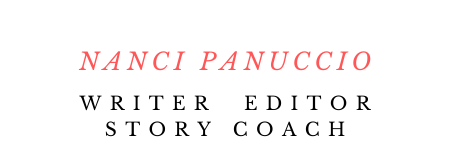You only have a matter of seconds to hook your reader into your story. Start too soon or too late, give away too much or too little, and your reader moves onto another book or hops on Netflix.
So, how do you craft a story opening that pulls readers in and keeps them wanting more?
In today’s episode, we’ll explore 3 story opening techniques that’ll do just that.
Download as an MP3 by right-clicking here and choosing Save As.
Big Takeaways
The screenwriter and director Elia Kazan once said he had 7 seconds to hook his audience. In fact, focus groups showed that if his beginning failed to captivate, they experienced the entire film as a bit of a dud, regardless of how stellar the middle or end.
Publishers typically reject books based on the first 5 – 8 pages, and in some cases, the first few sentences. Your beginning has to stop readers in their tracks. Otherwise, they’re onto Instagram or Netflix.
Why your beginning matters. 1:16
Readers make more decisions about your story based on your beginning than just about any other part. And the first and most important question we ask is this – Do I want to keep reading?
Plunge us into an already unstable situation. 3:25
The best stories don’t start at the beginning but in the middle of things. Readers want to meet characters in the middle of some kind of trouble. Where things are off-balance. Where life as your character knows it is about to give way.
Consider these openings.
There is a typo on the hospital menu this morning. They mean, I think, that the pot roast tonight will be served with buttered noodles. But what it says here on my breakfast tray is that the pot roast will be severed with buttered noodles. This is not a word you want to see after flipping your car twice at sixty per and then landing side-up in a ditch.
—Amy Hempel, Going
They shoot the white girl first.
—Toni Morrison, Paradise
I was born twice: first, as a baby girl, on a remarkably smogless Detroit day of January 1960; and then again, as a teenage boy, in an emergency room near Petoskey, Michigan, in August of 1974.
—Jeffrey Eugenides, Middlesex
Withold, withhold, withhold. 07:52
Resist the temptation to spoonfeed the reader essential information. Delay. Arouse questions. Create expectations. Keep the reader off-balance. That curiosity and tension will keep him wanting more.
Enticing beginnings postpone information.
Here’s the opening of Robert Cohen’s short story, “The Boys at Night.”
The baby arrived in summer. That was how we referred to her, the baby. No name, no gender, just the thing that she was, as if infancy was not a passing condition but a defining one. In her case, it was. But then we were all in need of some defining that summer. I was fourteen though I acted younger, Paulie was eleven but seemed much older, and my parents, those large, irritable people who sat across from us at dinner, were hovering warily around forty, and all the tedious complications that seemed to involve.
Two questions tug at us to keep reading.
What’s wrong with the baby.
and
What happened?
Hint at the Conflict. 11:51
Again, create reader expectations. Plant the seeds for the upheaval to come.
Check out this opening paragraph from J.D Salinger’s story, “Pretty Mouth Green My Eyes.” What I love about this opening is that it creates immediate curiosity.
When the phone rang, the gray-haired man asked the girl, with quite some little deference, if she would rather for any reason he didn’t answer it. The girl heard him as if from a distance, and turned her face toward him, one eye—on the side of the light—closed tight, her open eye very, however disingenuously, large, and so blue as to appear almost violet. The gray-haired man asked her to hurry up, and she raised up on her right forearm just quickly enough so that the movement didn’t quite look perfunctory. She cleared her hair back from her forehead with her left and said, “God. I don’t know. I mean what do you think?”
Rather than ask “what happened?”, we ask, “what’s going on?” and “What’s going to happen next?”
Over to you. 14:54
Here’s a writing exercise to help you craft your compelling story opening.

